Spring Security - 自定义登录
Spring Security是一个功能强大且高度可定制的身份验证和访问控制框架。它是保护基于 Spring 的应用程序的事实标准。 Spring Security 是一个专注于为Java应用程序提供身份验证和授权的框架。与所有 Spring 项目一样,Spring Security 的真正强大之处在于它可以轻松扩展以满足自定义需求。 Spring Security 的一些关键特性是:
- 对身份验证和授权的全面且可扩展的支持
- 防止会话固定、点击劫持、跨站点请求伪造等攻击
- Servlet API 集成
- 与 Spring Web MVC 的可选集成。
SpringSecurity 使用默认用户名和密码提供了自己的登录配置,但我们可以通过创建自定义登录配置来覆盖 SpringSecurity 的默认配置。我们可以添加多个用户,也可以允许他们不同的角色。这样我们就可以轻松地对安全 API 执行授权。让我们讨论如何在 Spring Security 中创建自定义登录。
分步实施
第 1 步:使用 https://start.spring.io/ 创建 Spring Boot 项目
Project: Maven
Language: Java
Spring Boot: 2.2.8
Packaging: JAR
Java: 8
Dependencies: Spring Web,Spring Security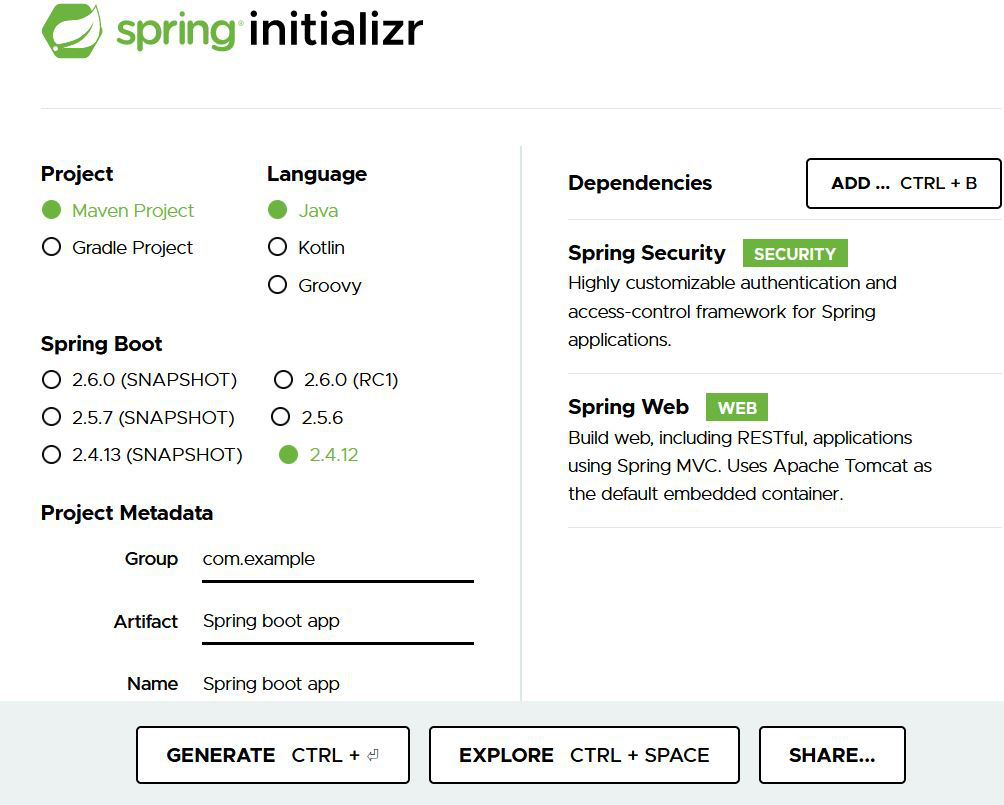
第 2 步:单击 Generate 将下载启动项目。
第三步:解压压缩包。现在打开一个合适的 IDE,然后转到 File > New > Project from existing sources > Spring-boot-app 并选择 pom.xml。点击提示导入更改,等待项目同步,如下图所示:

Note: In the Import Project for Maven window, make sure you choose the same version of JDK which you selected while creating the project.
第 4 步:现在转到 src > main > Java > com.gfg.Spring.boot.app 并创建两个Java文件,一个是控制器。 Java ,另一个是配置。Java
控制器。Java
Java
@RestController
public class controller {
@GetMapping("/delete") public String delete()
{
return "This is the delete request";
}
}Java
@EnableWebSecurity
public class config extends WebSecurityConfigurerAdapter {
// Adding the roles
@Override
protected void configure(AuthenticationManagerBuilder auth) throws Exception {
auth.inMemoryAuthentication()
.withUser("Zack")
.password("aayush")
.roles("admin_role")
.and()
.withUser("Aayush")
.password("Saini")
.roles("student_role");
}
// Configuring the api
// according to the roles.
@Override
protected void configure(HttpSecurity http) throws Exception {
http.
httpBasic()
.and()
.authorizeRequests()
.antMatchers("/delete").hasRole("admin_role")
.and()
.formLogin();
}
// Function to encode the password
// assign to the particular roles.
@Bean
public PasswordEncoder getPasswordEncoder(){
return NoOpPasswordEncoder.getInstance();
}
}上面的Java文件用于设置控制器以处理来自客户端的传入请求。现在我们必须配置我们将使用配置的请求。 Java文件。
配置。 Java: 此配置文件用于在 Spring 项目中创建自定义安全性。
Java
@EnableWebSecurity
public class config extends WebSecurityConfigurerAdapter {
// Adding the roles
@Override
protected void configure(AuthenticationManagerBuilder auth) throws Exception {
auth.inMemoryAuthentication()
.withUser("Zack")
.password("aayush")
.roles("admin_role")
.and()
.withUser("Aayush")
.password("Saini")
.roles("student_role");
}
// Configuring the api
// according to the roles.
@Override
protected void configure(HttpSecurity http) throws Exception {
http.
httpBasic()
.and()
.authorizeRequests()
.antMatchers("/delete").hasRole("admin_role")
.and()
.formLogin();
}
// Function to encode the password
// assign to the particular roles.
@Bean
public PasswordEncoder getPasswordEncoder(){
return NoOpPasswordEncoder.getInstance();
}
}
WebSecurityConfigureAdapter 类用于配置传入的请求,主要有两种方法用于配置。第一种方法用于为spring应用服务器添加角色,另一种方法用于根据角色区分请求。现在运行spring应用程序的主应用程序

Note: There is no default password is generated because we have already used external configuration for handling the user credentials.
在 Postman 中测试 API。转到邮递员并输入localhost:8080/delete
使用管理员角色:
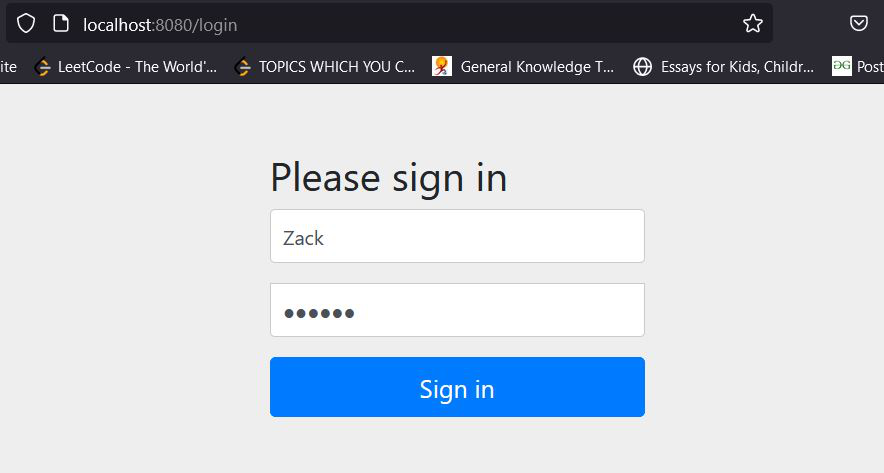
输出:
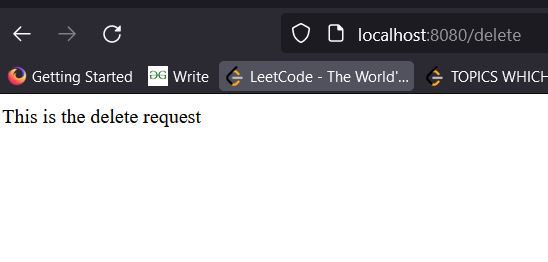
使用学生角色:
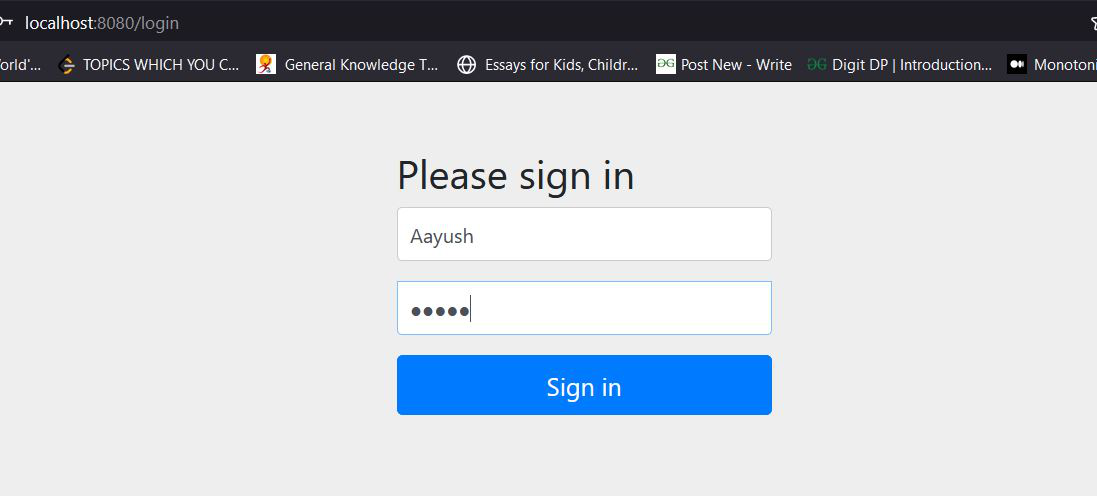
输出:
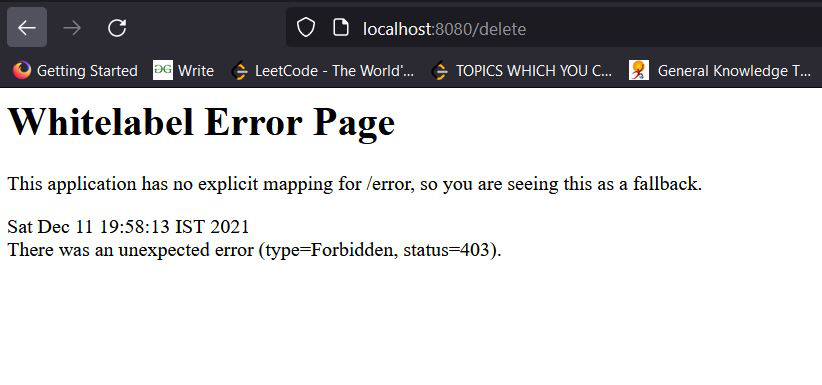
这样我们就可以在 Spring Application 中创建自定义登录。